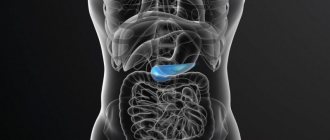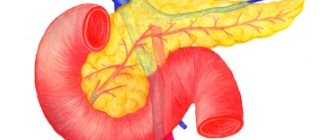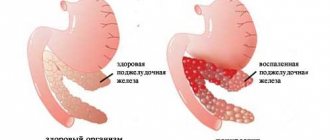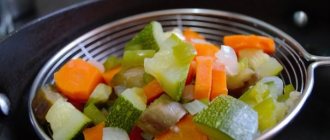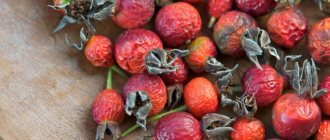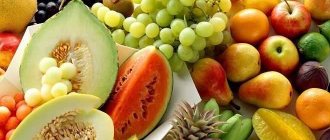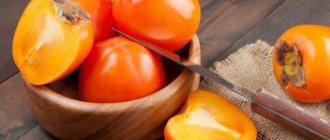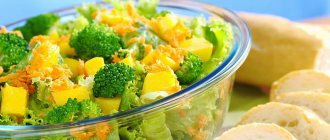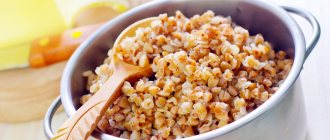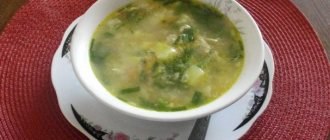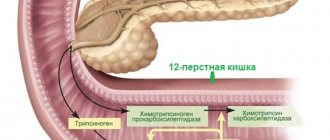Digestive diseases are widespread, which is associated with an increase in toxic, drug and viral exposures. Among the frequently diagnosed diseases, pancreatitis is not the least important. This is an inflammation of the pancreas tissue, which manifests itself as unbearable pain in the lower abdomen. During the acute period, patients are shown a gentle diet, in which, according to some gastroenterologists, beets are one of the main food products.
Is it possible to eat beets if you have pancreatitis of the pancreas or not, in what form will the vegetable be useful and when can it harm your health, which beet dishes are the healthiest and tastiest - we will consider further.
What are the benefits of beets?
This vegetable is very rich in compounds necessary for the human body, many of which are largely preserved even after heat treatment. These include:
- Plant fiber and pectin compounds;
- Fat-soluble vitamins, as well as B vitamins;
- Organic acids, for example, oxalic acid;
- Simple sugars;
- A huge number of microelements.
Due to this, regular consumption of the root vegetable promotes the following effects:
- Improving intestinal motility, timely removal of food digestion products;
- Weak diuretic effect;
- Normalization of blood pressure;
- Chopped beets flavored with oil have a positive effect on mild ulcerations of the mucous membranes of the gastrointestinal tract (but should not be used in acute conditions);
- Choleretic effect;
- Increased hemoglobin production.
Red beet soup
What does a vegetable contain that affects the human body?
Diet can be both the cause of the disease and a way to treat inflammatory processes in the body.
Beets are rich in nutrients, salts, micro and macroelements (iodine, manganese, chromium, zinc and others). The root vegetable can and should be included in the patient’s menu, as it relieves inflammation of the pancreas, but provided that the measures are followed and the recommendations of doctors are followed.
Beets have a number of positive effects on the body:
- Due to its iodine content, the vegetable is recommended for use in diseases of the pancreas, since the microelement is involved in the process of restoring the impaired functions of this organ.
- Boiled root vegetables, regularly eaten, stimulate the production of choline, speed up the process of protein digestion, which also leads to improved pancreas function.
- Improves the circulation of bile in the body thanks to flavonoids, which relieve tension from the walls of blood vessels.
- Pectins contained in beets help remove harmful salts.
Is it possible to eat with pancreatitis or not?
Beets are recommended, if there are no contraindications, by nutritionists for use in cases of pancreatitis.
After taking this vegetable, processes occur that improve the functioning of the body of a patient with pancreatitis, against the background of which the activity of the pancreas improves.
When taking beets, a patient with pancreatitis improves:
- process of fat metabolism;
- water-salt balance;
- purgation;
- kidney and liver activity;
- metabolism.
Is it allowed to use for cholecystitis?
Beets have a choleretic effect on the body, protecting against the formation of stones in the gallbladder and its ducts. The vegetable is useful in the treatment of cholecystitis; it helps relieve congestion and blockages of the bile ducts. Treatment of cholecystitis must be carried out promptly; it can spread to the pancreas and cause pancreatitis.
The attending physician will be able to accurately answer the question whether or not to eat beets for pancreatitis and cholecystitis, using the patient’s clinical data and general anamnesis for analysis.
Stage of exacerbation of pancreatitis
When a patient has an acute form of the inflammatory process or an exacerbation of a chronic one, he is put on complete fasting for several days, and then small portions of low-calorie food with zero fat content are introduced. For the digestive system of such a patient, even boiled vegetables are heavy food, so introducing them into the diet is definitely prohibited.
The ban on taking beets during the acute stage is associated with the following factors:
- It contains a huge amount of coarse fiber, which increases the motor activity of the digestive system, which provokes diarrhea, flatulence, and cramps in patients;
- Acids stimulate the production of juices by the digestive glands and, above all, by the diseased gland. And this is very dangerous - the iron will digest its own juices and tissues more than ever, and the patient will suffer from belching, nausea, and abdominal pain.
Grated boiled beets with herbs is the main dish of this vegetable, which is suitable for pancreatic pathologies
What harm can it cause?
Beets can provoke severe pain and cause exacerbation of pancreatitis in the following cases:
- its consumption in large quantities or in raw form;
- acute form of the disease.
The presence of coarse plant fibers in the root crop can cause irritation of the mucous membranes and lead to inflammatory processes in the digestive organs.
Beetroot taken in excessive quantities or during an acute phase, as well as in its raw form, can harm the patient’s health.
Since the vegetable contains coarse plant fibers, and beet juice has a high concentration of organic acids, the root vegetable can negatively affect a patient with pancreatitis or cholecystitis, causing irritation of the mucous membranes and provoking inflammatory processes in the digestive organs.
Beetroot for chronic pancreatitis
A month after the onset of stable remission after the exacerbation process, boiled beets and dishes using them can be introduced into the diet. Raw beets and juice from them are contraindicated for any pancreatitis due to the huge concentration of acid-type organic compounds. First, about 10 grams of beets are added to the salad or main course; if there are no undesirable effects, this amount is slightly increased. When preparing beets for pancreatics, the following restrictions must be observed:
- Before cooking, root vegetables are thoroughly washed, but the skins are not removed. They are placed in cold water and cooked under the lid for two to two and a half hours. Large vegetables can be cut into two or three parts;
- Under no circumstances should you add citric acid, vinegar or other acidifiers to water, the addition of which is practiced in order to preserve color. This will definitely cause an exacerbation of the disease!;
- In addition to boiling, you can also bake the root vegetable in the oven;
- To minimize irritation of the mucous membranes, it is recommended to chop the vegetable using a grater or food processor.
Red vegetables with nuts for pancreatitis are eaten in very small quantities, since the dish contains fats
Recipes for dishes with beets, recommended for consumption
Boiled beets are actively used for pancreatitis in the chronic stage and during periods of remission. There are many healthy and delicious recipes for pampering yourself at home with a varied diet.
It’s very tasty and healthy to simply bake peeled beets in pieces in the oven or in a slow cooker. This side dish does not require seasoning with oil or spices, as it is delicious on its own. They perfectly complement meat or fish meatballs.
Beetroot
Beetroot soup, in addition to the beets themselves, is prepared from a whole assortment of vegetables. For 100–150 grams of beets, take 2–3 potatoes, 1 large carrot and 100 grams of Chinese cabbage.
All vegetables are boiled in salted water for 40 minutes, peeled, grated on a coarse grater and poured into broth - chicken or turkey, with pieces of boiled meat. Boil everything together for another 10 minutes, add finely chopped herbs (dill, parsley) and 1-2 tbsp. l. low-fat sour cream.
The vinaigrette
A simple but very healthy salad is easy to prepare:
- 1 beet, 2 potatoes, 1 carrot, boil whole for 50 minutes;
- vegetables are peeled and cut into small cubes;
- add 2 tbsp. l. oils (olive, refined vegetable, flaxseed);
- stir.
You can add a little sesame to the dietary vinaigrette. But under no circumstances should they use pickled cucumbers or sauerkraut, or season with apple cider vinegar or table vinegar. These products are on the list prohibited for pancreatitis.
Beet cutlets
Vegetable cutlets are easily digestible and are great for a snack or afternoon snack, with a piece of bread and tea. Beet cutlets are prepared according to different recipes and with variations.
The basic algorithm is approximately the following:
- The beets are boiled, peeled and grated on a fine grater.
- Add 2 tbsp to the mixture. l. melted butter, a pinch of salt, 1 egg white.
- Choose flour or crushed cereal. This can be rice flour, buckwheat, semolina or crushed oat grains. The cereal is pre-cooked for 20–25 minutes, creating a mucous-floury ingredient for the cutlets. Instead of cereals or flour, you can take crushed crackers.
- All components are mixed and thoroughly ground (conveniently swirled in a blender).
- Form balls. Slightly flattened, they are placed in a slow cooker or steamed for 10–15 minutes.
Instead of cereals or flour, you can take crushed crackers. All these are variations to diversify the menu.
How to eat beets for pancreatitis?
When considering the inclusion of beetroot dishes in the pancreatic diet, you should be guided by the following criteria:
- A cooking method that puts the least amount of stress on the gland. Long-term heat treatment is required, which can be boiling (including steaming), stewing or baking. A large amount of fiber taken from raw vegetables aggravates any digestive disease, especially those associated with the inflammatory process. In addition, raw root vegetables contain substances that provoke the gland to produce more juices, which is absolutely not advisable;
- It is also important to follow the quantity and regimen of taking the product prescribed by nutritionists. A month after the exacerbation has been fully compensated, the patient can be given one teaspoon of puree from carefully boiled and chopped beets. The next day you need to observe how the patient’s well-being changes. If no unpleasant symptoms arise, he can be given a spoonful at least twice a week and after a week, increase the single dose to two spoons. Gradually it is brought up to one hundred grams. If the patient shows complaints from the digestive system, be it diarrhea, flatulence, abdominal pain or something else, he should not take beets for at least a month, after which you can try to repeat the experiment.
Beetroot juice is strictly prohibited for this disease.
A few simple recipes
For this category of patients, dishes made from boiled and baked root vegetables are recommended.
Beets baked in oil
With this dish, as well as with a boiled product, you can begin introducing it into your diet. You need to wash the beets and trim them on both sides, but do not remove the peel. The fruits are cut in half, greased with oil on the cut side and placed on a baking sheet lined with foil, cut side up. Bake for about 40-50 minutes at a temperature of 200 degrees.
Vegetarian beetroot soup
This soup is recommended for those patients who have already consumed small doses of baked or boiled beets without any annoying sensations from the gastrointestinal tract. In addition to the main root vegetable, you can add vegetables such as potatoes and carrots. All vegetables should be washed, peeled and cut into small slices or circles. Fill them with water and cook them for about 40-45 minutes (a little longer is possible, but not less). The cooled soup is poured into a cup and a little chopped greens are added. Salt and fatty dressings should not be added. You can eat 50-100 grams of this soup at a time.
Boiled beets for pancreatitis
This form of root vegetable processing is the most popular in the nutrition of patients with digestive problems due to its simplicity and the possibility of implementation in any conditions in the presence of a heating element. The vegetable is thoroughly washed, but it is not at all necessary to remove its peel. It is poured over with cold water and boiled for a long time - for at least two hours. Now you need to wait until the vegetable has cooled, and then remove the peel, if it has not been removed earlier (it is preferable to cook with the skin - this way more valuable substances are preserved). Then you need to grind the pulp using a fine grater - or cut the fruits into slices and place them in a blender. Grinding reduces potential irritation to the digestive organs.
Important! You can add a very small amount of vegetable oil to the finished dish, but you cannot add garlic, hot seasonings, sour additives, mayonnaise and sour cream. Also, you should not add vinegar, lemon juice and similar acidic agents to the water in which the fruit is boiled.
The mode of consumption of the dish is subject to the general rules of consumption described in the article.
How to cook a vegetable correctly? Expert advice
How healthy are boiled beets? What properties does it have? Let's look at them. So, beets:
- has a beneficial effect on the body;
- eliminates fluid stagnation;
- normalizes pancreatic functions;
- fights bad cholesterol;
- has a beneficial effect on metabolic processes.
Before eating boiled beets for pancreatitis, you should consult your doctor. This vegetable contains a lot of oxalic acid, and this negatively affects health in case of individual intolerance. The vegetable should be processed correctly: boil until soft, grind until pureed, eat up to 100 g per day using vegetable oil or sour cream without using spices.
If you eat an excess amount of a vegetable or consume a product during an exacerbation of an illness, you can harm your health. Beetroot juice contains a huge amount of organic acids, and the raw vegetable contains fiber. They negatively affect the condition of the patient with pancreatitis. Acids irritate mucous membranes and cause diseases of the digestive system.
You should stop eating beets if you have one of the following pathologies:
- diarrhea;
- aggravated form of diabetes mellitus;
- acute osteoporosis;
- urolithiasis during exacerbation;
- allergy;
- individual intolerance.
With proper consumption of beets, proper nutrition and the use of medications, the condition of a sick person can be stabilized. Let us note that in any case the vegetable should not be neglected, but there is no need to abuse it either.
If the patient is diagnosed with pancreatitis and prescribed a diet, then boiled beets complicate the digestion of food. In order for the vegetable to be healthy, before heat treatment it must be rinsed under warm water without peeling. Then put in a bowl with cold water and cook for about two hours.
If the root crop is too large, it should be cut into equal parts. During cooking, you should not pour in various acids - vinegar, lemon juice, although this can preserve the color of the beets. However, this action causes the disease to worsen. The vegetable must be baked in the oven without peeling. With this processing, the beets become much softer, juicier and do not lose their beneficial qualities. It is not recommended to eat vegetable salads seasoned with mayonnaise.
Below are recipes for some healthy dishes for pancreatitis. They should be used when the disease is in remission. You should also consult your doctor before use.
Dietary beetroot soup for patients with pancreatitis is prepared from the following vegetables (you will need 1 piece of each): Chinese cabbage, potatoes, carrots, tomatoes, sweet peppers, onions. You will also need two beets. It is acceptable to use vegetable oil and herbs. Use purified water or broth.
The vegetable is placed in a pan with cold water, cooked until tender for two hours, cooled to room temperature, peeled, pureed in a blender, and a little vegetable oil is added. Everything is thoroughly mixed and eaten.
You can prepare a salad from baked beets (3 pcs.), boiled eggs (3 pcs.), hard low-fat cheese (200 grams), seasoned with yogurt or sour cream. Method of preparation: beets are baked in foil at 180 degrees for two hours, two eggs and 200 grams of cheese are grated. Mix and season. The dish is ready to eat.
To preserve the benefits of the root vegetable and facilitate digestion in the stomach, it is necessary to adhere to some nuances of preparation.
- Before boiling the product, wash it well. The root vegetable is cooked under the lid for at least 2 hours.
- Cook the beets with the peel intact; if the root vegetable is large, you can cut it.
- It is prohibited to add acetic and citric acid or kvass to the water when cooking the product. Although many people use this method to preserve the color, in the case of pancreatitis, boiled beets with such manipulation will cause an attack.
grate the beets
Before eating, boiled beets are grated or crushed in a blender to avoid irritation of the gastric mucosa. You can also bake it in the oven, so it will become juicier and softer.
If the disease occurs in an acute stage, diet therapy is prescribed, which involves complete abstinence from food. After 20 days, the patient requires complete replenishment of lost vitamins and microelements. To do this, low-calorie foods (vegetables) are gradually introduced to the patient with pancreatitis.
It is forbidden to eat fatty foods, as they are difficult to digest by the stomach and intestines. In addition to biologically active elements, the root vegetable contains fiber, which is difficult to digest.
When the body is completely healthy, consumed plant foods are beneficial. Beetroot promotes the flexural contraction of the colon muscles. The stomach works in a natural mode and digests consumed foods well. Although in the acute form of the disease, fresh and boiled root vegetables can cause a deterioration in well-being.
So, when consuming beets during acute pancreatitis, even a boiled vegetable can cause complications in the digestion of food products, therefore during an exacerbation of the disease, you cannot eat the product in any prepared form.
doctor for pancreatitis
If the doctor’s recommendations are not followed, the vegetable will complicate the condition and become a factor in subsequent inflammation of the pancreas.
For the treatment of chronic pancreatitis of the gastric glands, a diet is prescribed, which is designed to be gradually introduced into the diet after the attacks of the pathology have been eliminated.
Following the rules for processing the product, for patients with chronic disease it is introduced into the diet in small quantities. Initially, it is permissible to use 1 tbsp. l. and over the course of several days the portion is increased to 100 grams.
Is it possible to have boiled beets for pancreatitis? In chronic forms of pancreatic disease, it is recommended to eat boiled product. After cooking, beets have a positive effect on the stomach.
vinaigrette for pancreatitis
But refrain from using vinaigrette if you have pancreatitis. Diced beets in a salad during digestion will load the gland and cause an aggravation. The effect of the product on the body of a patient with the chronic stage of pancreatitis, when taken in an available amount, is favorable.
- Intestinal adsorption occurs.
- The metabolic flow of fats is corrected.
- Pressure increases.
- Boiled vegetable salad. The product is boiled in the peel for 2 hours. After cooking, it is peeled and grated. The salad can be seasoned using olive oil.
- Salad with beets baked in the oven, with the addition of boiled eggs, cheese, and low-fat sour cream for dressing. Initially, the vegetable needs to be baked in foil. Cooking time 2 hours at 180 degrees. Then grate 200 grams of cheese, 2 eggs and baked root vegetables. Mix all ingredients and season with sour cream.
- Root vegetable soup. After chopping the product on a grater, place it in a pan of boiling water with chopped vegetables - potatoes, carrots and cabbage. Then add salt and cook for at least 40 minutes.
The juice is very beneficial for digestion as a strong laxative. This property of the product is due to the popularity of drinking it with various diets.
beet juice
If you drink a beet drink for pancreatitis, it will help cleanse the body, eliminate the symptoms of the disease thanks to its laxative effect, removing toxic substances from the liver and blood vessels, as well as those that contribute to the development of malignant tumors.
When the body is cleansed, blood flow increases and pressure decreases. When drinking the drink, blood penetration into the brain increases, memory and concentration improve. And beetroot drink quickly restores lost strength after a long drinking regimen during a hunger strike or after an illness.
The juice must be drunk 20 minutes before meals.
The ingredient is selected based on taste desires. Mixed beetroot drink is endowed with greater benefits and acquires a pleasant taste.
During the period of stable remission of pancreatitis, when consuming juice, follow the recommendations.
- The mixture is drunk no later than an hour after its preparation.
- Juice is introduced into the diet gradually.
- You can drink the mixture 2 times for 7 days.
If side effects appear after taking it, such as nausea, vomiting, you should no longer consume the juice.
Since pancreatitis has two forms, the causes and symptoms in patients will differ, which is important when making the correct diagnosis. If you have pancreatitis, it is very important to visit a doctor who, after examination, will prescribe appropriate treatment.
Beetroot is known for its medicinal properties and beneficial effect on pathological processes. Its huge advantage is the high and varied content of useful components, the amount of which remains almost unchanged even after heat treatment.
It is a source of betanin (improves hematopoiesis), curcumin (has an analgesic effect), fiber (normalizes metabolic processes).
In addition, the composition contains vitamins A, B, C, PP, micro- and macroelements such as calcium, potassium, zinc, manganese, iodine, phosphorus, copper, iron, sodium.
Beets are useful in any form, but for diseases of the digestive system, gastroenterologists recommend consuming them boiled or baked.
What are the benefits of beets:
- it burns fat, suppresses appetite, activates metabolic processes, helps normalize weight;
- improves hematopoiesis, accelerates general lymph flow, prevents the development of cardiovascular pathologies;
- relieves pain and has a beneficial effect on the condition of muscle tissue;
- reduces high blood pressure;
- useful for women during the menstrual period, as it helps to cope with the symptoms of anemia: weakness, dizziness, increased irritability, apathy;
- strengthens and supports the human immune system;
- cleanses the body: removes toxins and salt deposits;
- replenishes the deficiency of vitamin A, B, C, micro- and macronutrients;
- promotes the healing of ulcerative defects;
- has diuretic properties: retains fluid in the renal tubules and increases the volume of urine;
- stimulates the physiological act of intestinal peristalsis (laxative effect);
- facilitates the absorption of nutrients, helps digestion, improves the functioning of the gastrointestinal tract.
Beet juice for pancreatitis
Despite the fact that the juice does not contain fiber, which is largely responsible for limiting the use of vegetables in dietary nutrition, drinking it is strictly prohibited in case of pancreatitis - both acute and chronic with periodic exacerbations. This is due to the huge concentration of acids and sugars in the product, which strongly stimulate the secretion of digestive juices, which has a bad effect on the diseased gland and contributes to its destruction.
The juice may also cause diarrhea, as it increases digestive motility. The danger of sugars is due to the fact that when this gland is inflamed, insulin is produced in insufficient quantities and, if you do not strictly avoid sugars, their concentration in the blood will be excessively high, which leads to very serious consequences for the whole body.
However, with a very confident remission, that is, in the case when no unpleasant phenomena were observed for one and a half years from the end of the last exacerbation, you can carefully introduce small doses of juice into the diet, guided by the following recommendations:
- The juice is always diluted by half with water or cucumber juice, which contains a very small percentage of acids. Can be diluted with potato or pumpkin juice;
- It is advisable to drink the drink freshly squeezed, but immediately after preparing it, place it in the refrigerator for a couple of hours - this technology reduces the activity of substances that cause unnecessary stress on the pancreas;
- You can take it a maximum of twice a week;
- It must be prepared from high-quality vegetables, preferably not fertilized with nitrates and grown on a private farm;
- The most important point is the dosage! First, the patient is given a teaspoon of a mixture of beet juice with a more digestively neutral vegetable juice or water. If no negative reactions occur during the day, after 3-4 days he can receive the same dosage and gradually increase it. However, a single dose should not exceed fifty milliliters. And don’t forget that you can drink the composition no more than twice a week.
If the patient experiences negative sensations from the digestive tract, he will have to stop taking beetroot recipes.
Contraindications
People suffering from pancreatitis should avoid beets if they have additional diseases such as:
- acute osteoporosis;
- having an allergy to this vegetable;
- severe diabetes mellitus;
- irritable bowel syndrome;
- urolithiasis disease.
There is no need to completely stop eating beets if you have pancreatitis. By following all the doctor’s recommendations, as well as consuming this vegetable correctly, you can avoid exacerbation of the disease and benefit the patient’s body.
Despite the fact that beets are a healthy product, they are contraindicated during exacerbation of pancreatitis and cholecystitis, as well as in the presence of additional diseases in the body.
The consumption of beets is strictly contraindicated in the presence of the following diseases associated with pancreatitis:
- irritable bowel syndrome, diarrhea;
- severe form of diabetes mellitus;
- acute osteoporosis;
- severe form of urolithiasis;
- allergic diseases, individual intolerance.
A competent approach to consuming beets (if you adhere to the diet and effectively combat the disease) will bring health improvement to people suffering from pancreatitis and cholecystitis. Therefore, you don’t need to completely give up this healthy and tasty vegetable, but you shouldn’t abuse it either.
For a long time, beets have a reputation as a healthy product. It always has a place on the holiday table; women know a lot of dishes using this vegetable. But not only housewives have a good opinion about this root vegetable.
Doctors advise including beets in the diet for hypertension, bowel problems, atherosclerosis and a number of other diseases. The product contains many microelements that do not lose their beneficial qualities after exposure to heat. Next we will tell you whether it is worth eating vegetables if you have pancreatitis.
